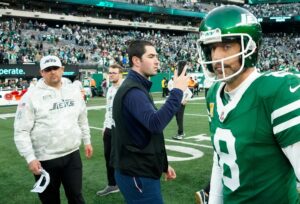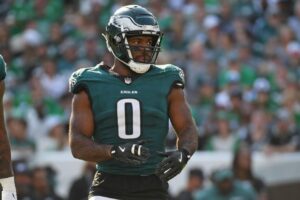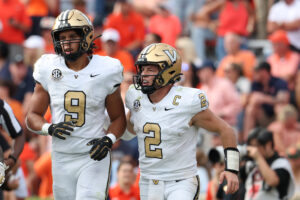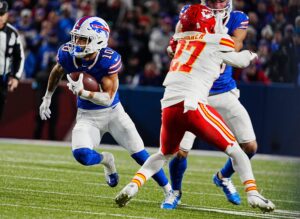As we near the end of the NFC South in our newest series “The Breakdown,” we take a look at the Atlanta Falcons schematic philosophy. Former offensive coordinator Kyle Shanahan parlayed a terrific 2016 campaign into a head coaching job with the San Francisco 49ers as the Falcons hand the reigns over to another talented mind in Steve Sarkisian. Head coach Dan Quinn is the mastermind behind a defense that, while consistent, lacked the desired efficiency in both facets of the game. Here’s a look at what the Falcons do on both sides of the ball.
The Breakdown: A Look at the Atlanta Falcons Schematic Philosophy
Maintaining Uniformity
Despite Shanahan’s departure, don’t expect much of the offensive structure to change. The foundation of this offense was built on the zone running game and play-action as an extension of a well-designed and well-executed ground operation. The most important aspect of their offensive success is how multiple the unit was last season, most notably their use of 21 personnel.
Fullback Patrick DiMarco was a key cog in the development of both aforementioned aspects where he was a viable lead blocker that could pave lanes for Devonta Freeman and handle flat routes in the play-action portion of the passing game; replacing his impact will prove to be a tough task.
By eliminating the disconnect between these looks, linebackers and safeties were consistently manipulated and out of position. The false run reads took them away from their desired zones and created wide throwing lanes at the intermediate level that further allowed for yards after the catch opportunities.
Creating similar looks, Atlanta would operate from a number of condensed sets that signaled run before pay-action caught the defense in a lull. It wasn’t unusual to see Shanahan call for a number of vertical attempts to capitalize on big-play opportunities. These tighter sets that featured receivers inside numbers provided them with opportunities to out-leverage defenders as run blockers on the foundational outside zone runs.
Seattle Similarities
Quinn’s tenure as the Seattle Seahawks defensive coordinator lead to one of the most dominant stretches from that side of the ball in NFL history. It should come as no surprise that such an effective scheme has become the cornerstone of the Falcons defense.
First and foremost, his defenses operate out of a base 4-3 Under front with what’s known as the LEO, the hybrid pass rushing role that is filled by budding star Vic Beasley. He essentially rushes along the weak side from a two or three-point stance. But Beasley is expected to handle SAM linebacker duties as a defender who can rush from the strong side and handle run duties and tight ends and running backs in coverage. In such fronts, the defensive linemen are tasked with shooting gaps and getting up-field, while Beasley will be forced to control the edge and disrupt tight ends upon their release.
As for the coverage aspect of Quinn’s unit, he implements multiple personnel packages and a bevy of nickel looks that keeps speedy linebacker Deion Jones on the field. Athletes like such are becoming increasingly popular in Quinn’s system, hence the addition of 2017 third-rounder Duke Riley.
The base Cover 3 look calls for a safety that can roam the middle of the field, but current free safety Keanu Neal is a tremendous player who has no qualms when coming downhill to challenge the run. The foundation of this system is speed, and with players like Jones, Riley and Neal (even Beasley and linebacker De’Vondre Campbell are faster than their respective positional norms) the Falcons implement a variety of blitz and pressure packages that capitalize on Quinn fundamental mindset of attacking.
Losing Shanahan means the loss of a terrific mind, but Sarkisian is a great mind in his own right and won’t deviate far from Atlanta did offensively in 2016. The other side of the ball is intact and a year older, which suggests more fundamentally sound play as arguably the league’s most athletic defenses. Expect Atlanta to run the tables in the South again and look to challenge for a number one seed in the NFC.
Main Image:






